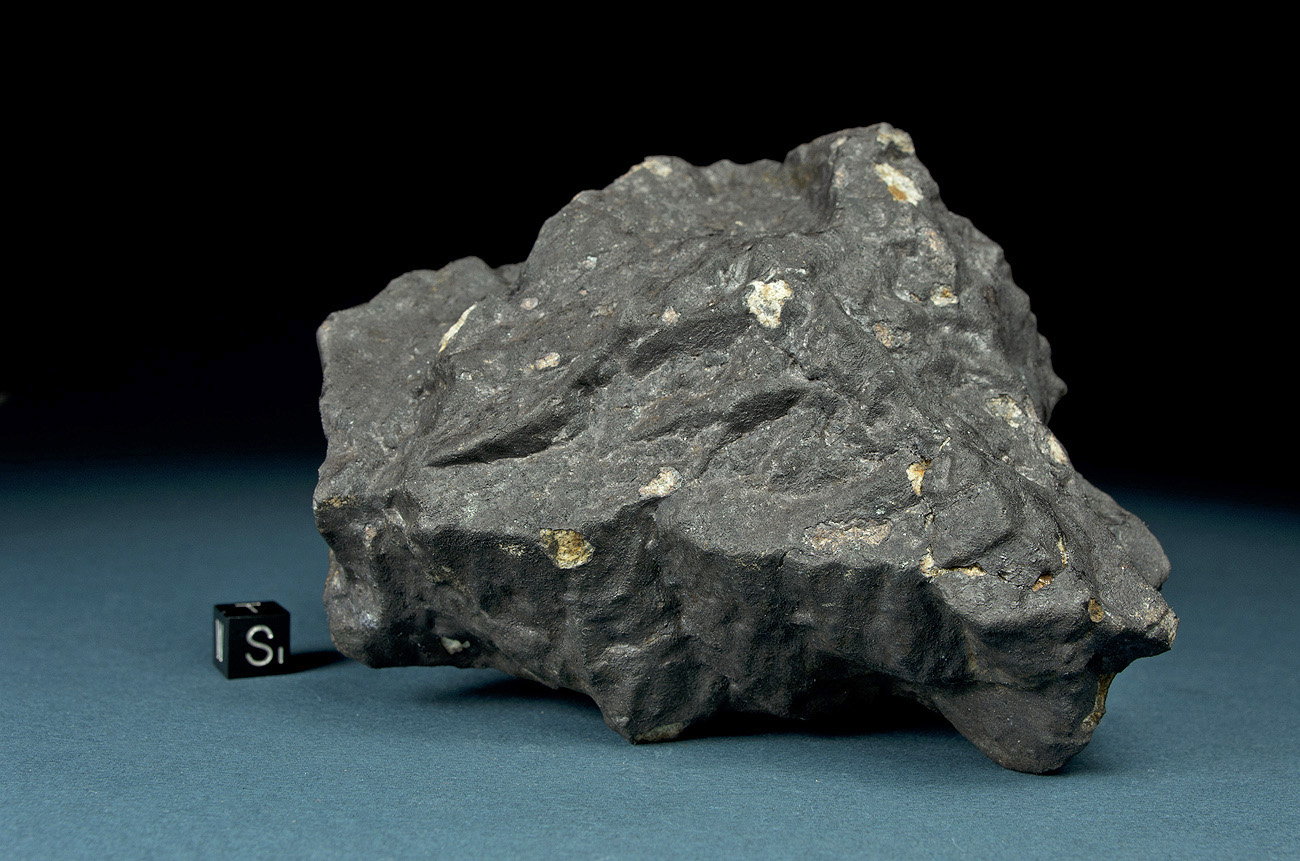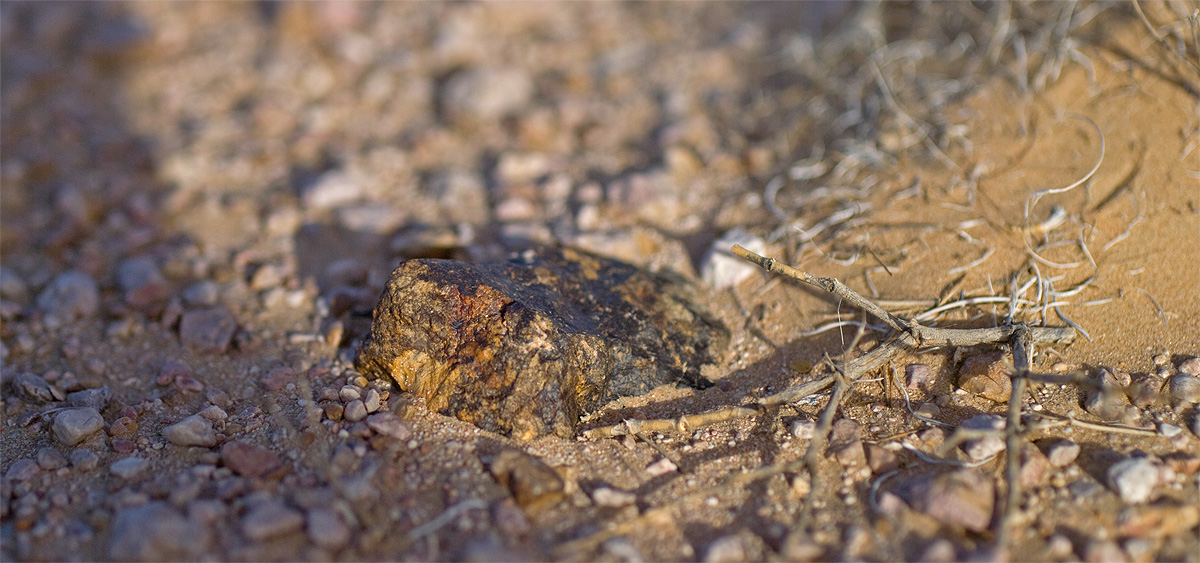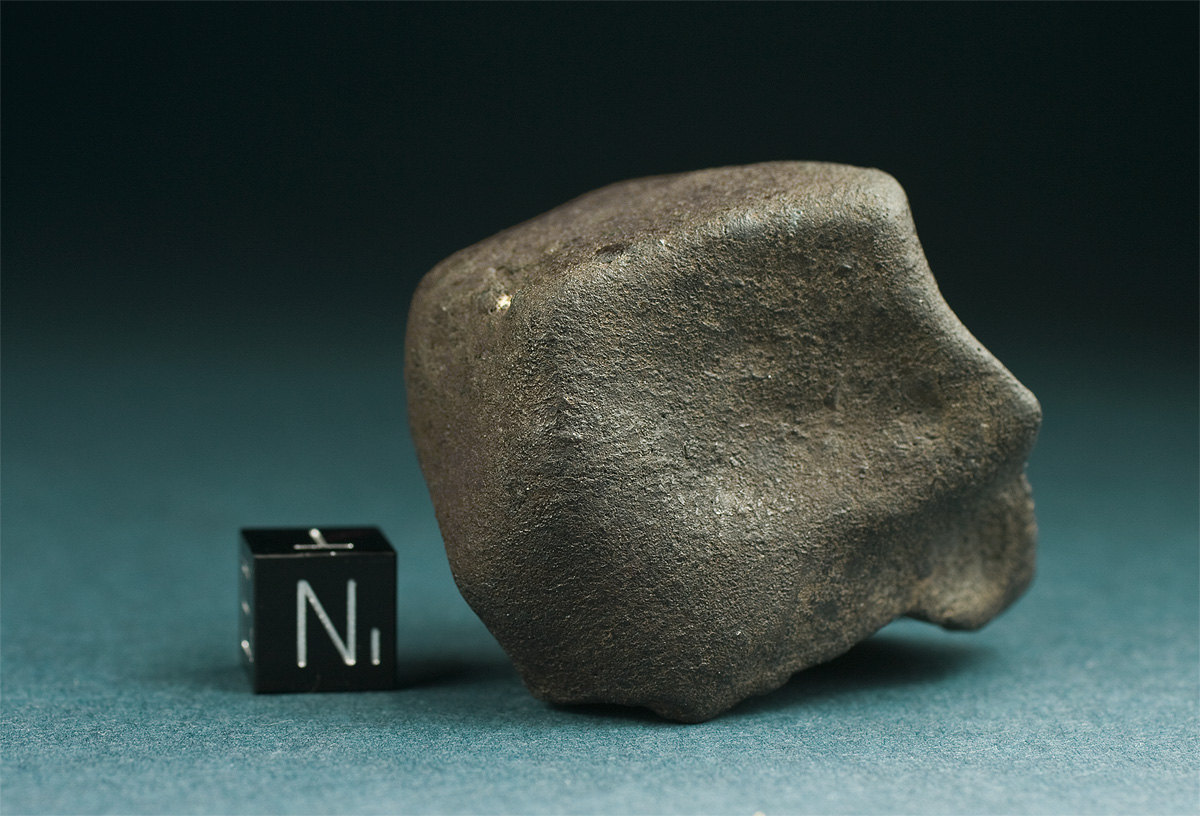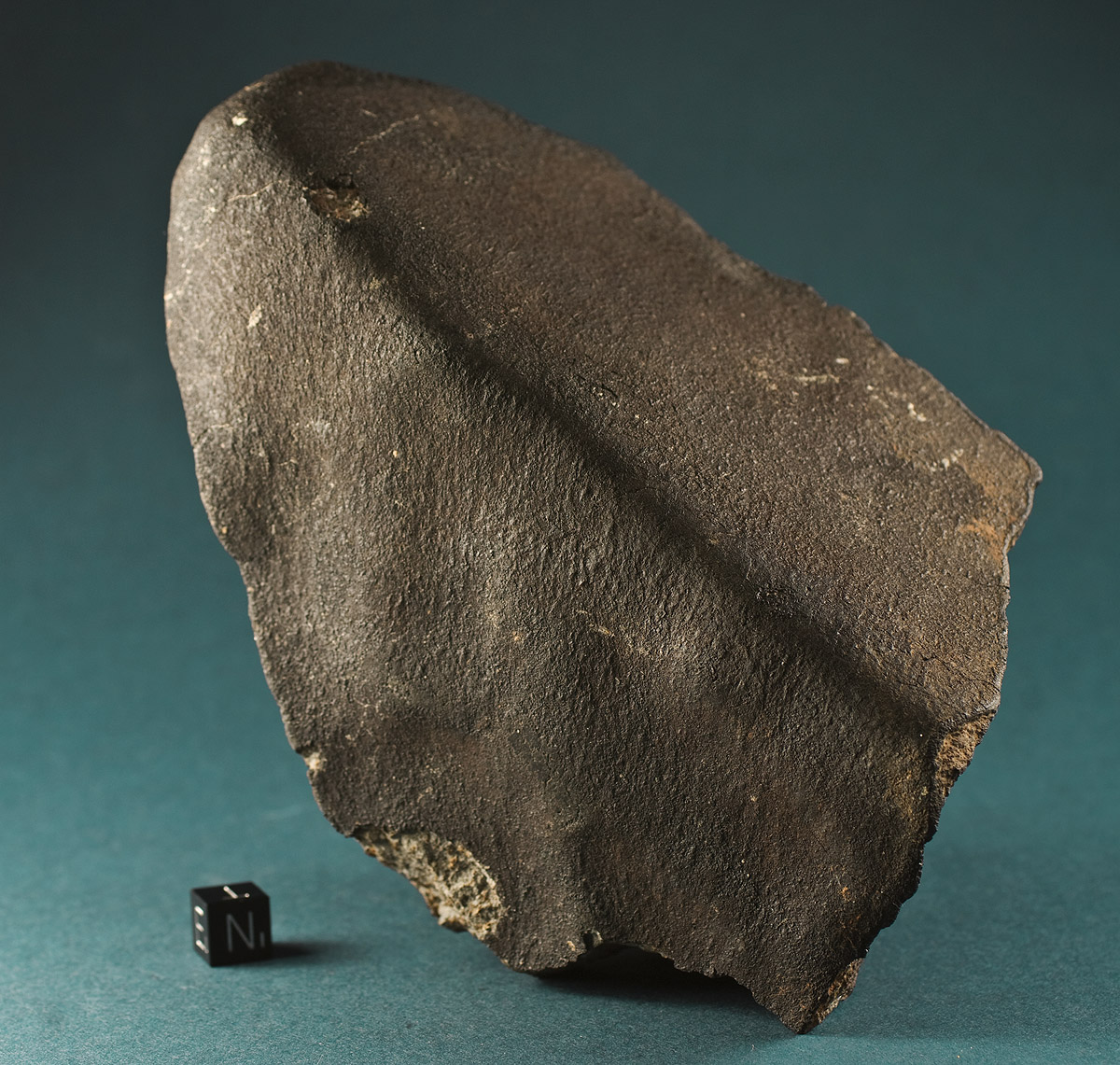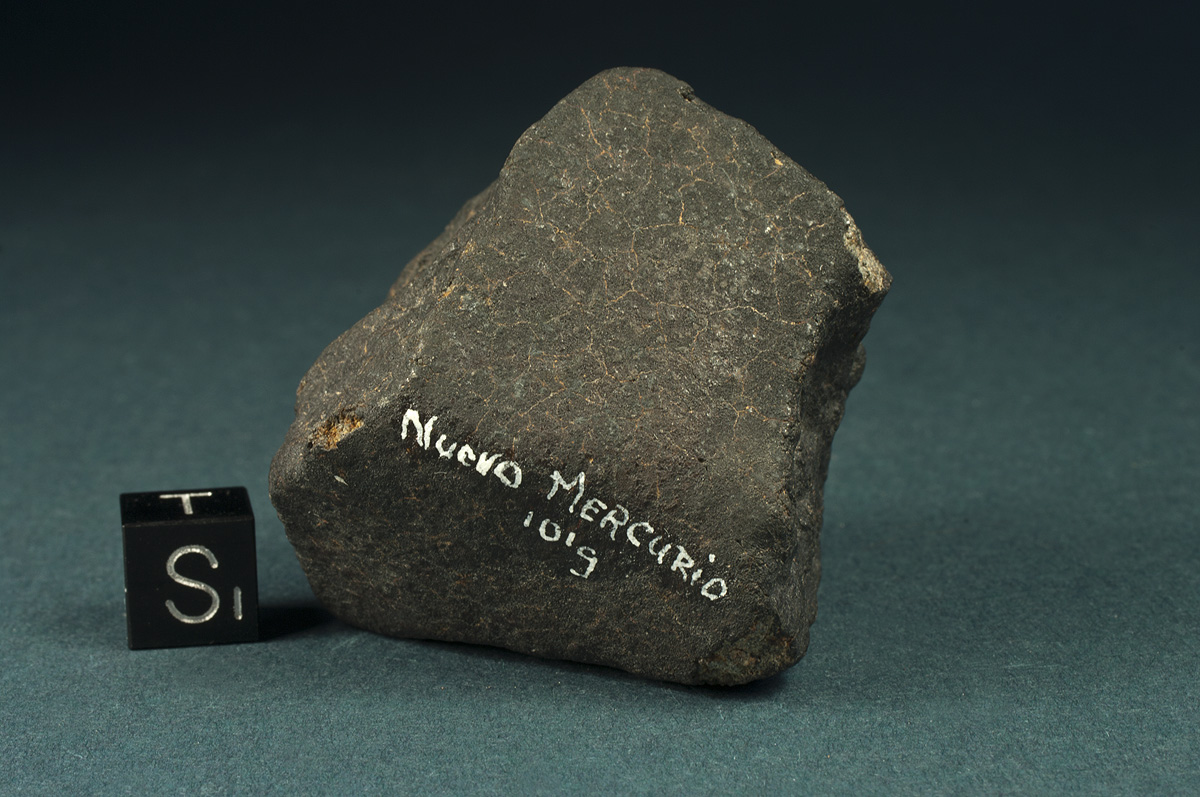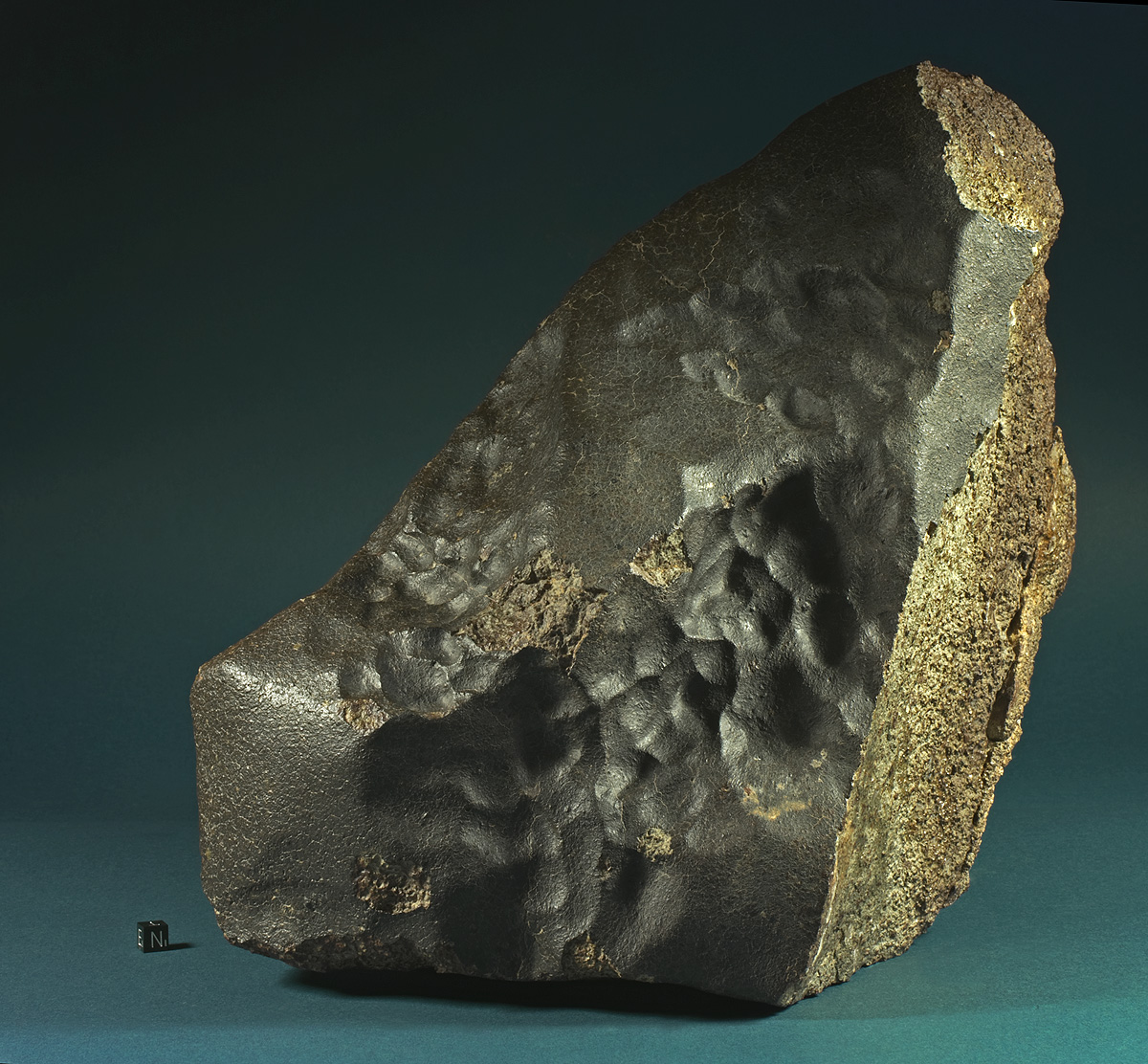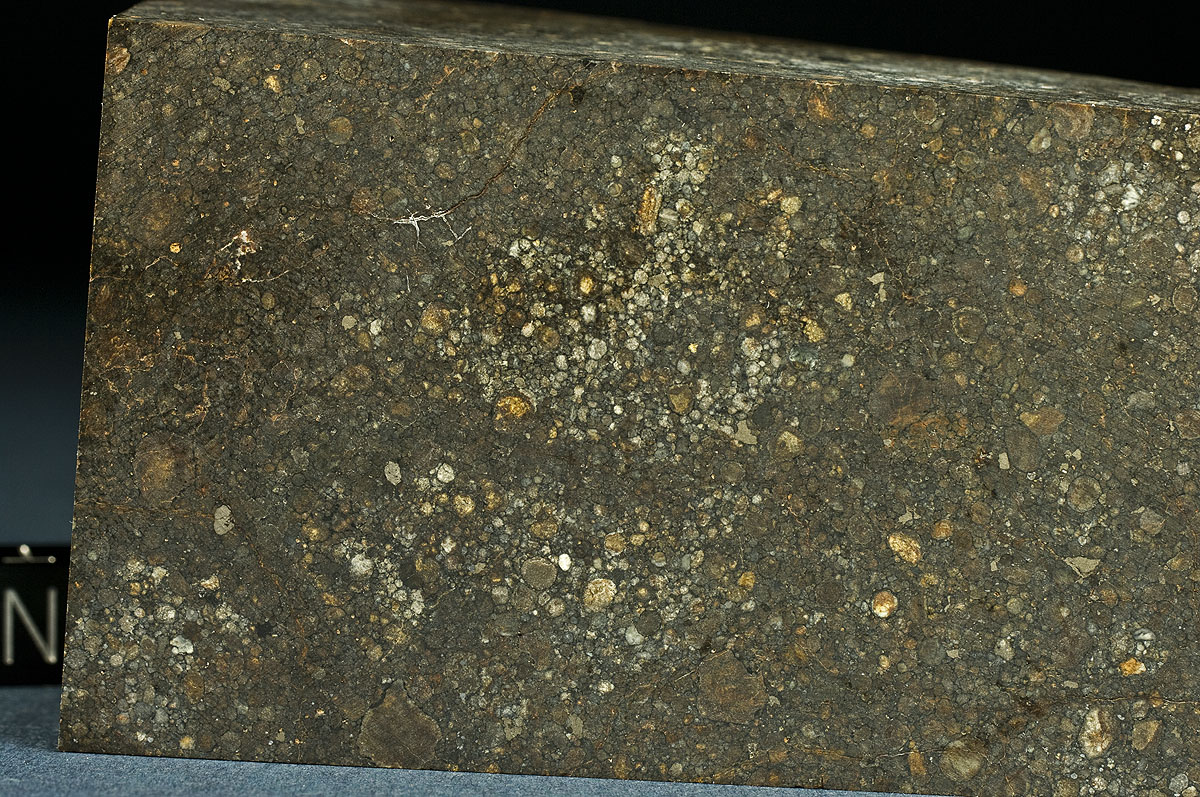Meteorite Recon | Stones
Meteorite search expedtions into continental deserts, meteorite features, collection specimens and photography
Meteorites, Meteorite, meteoritic, iron, meteorites, photos, pictures, in situ, strewnfield, strewn field, impact, fall, finds, Meteorite searching
146
archive,paged,tax-portfolio_category,term-stones,term-146,paged-5,eltd-core-1.0.1,ajax_fade,page_not_loaded,,borderland-ver-1.8, vertical_menu_with_scroll,smooth_scroll,paspartu_enabled,paspartu_on_top_fixed,paspartu_on_bottom_fixed,transparent_content,grid_1300,wpb-js-composer js-comp-ver-6.0.3,vc_responsive,elementor-default,elementor-kit-6471
Stone, chondrite, LL5, S4, W0
Chelyabinsk Oblast, Russia
Fall: 15 February, 2013, 03.22 UT
TKW: ~1 MT
Individual 772.0 g
Pristine 772 g Chelyabinsk individual. The position and course of shock planes can clearly be seen under the thin layer of secundary fusion crust that covers all surfaces of the specimen. Rough edges and coarse texture point to a late-stage fragmentation shortly prior to the transition into dark flight. Despite the large number of recovered meteorites, Chelyabinsk specimens of this size are rare. The 772 g individual ranks number 31 in the mass-sorted register of documented finds.
Stone, achondrite, eucrite cumulate, AEUC
Zufar, Oman
Find: 1999
TKW: 27.24 kg
Individual 223.7g g
The Dhofar 007 meteorite strewn field was discovered by Russian meteorite prospectors in 1999. More than 27 kg were found within a distribution ellipse 3 km wide and more than 6.5 km long. Due to the untypical texture and color of the slighty weathered eucrites they are hard to spot on the desert surface. The lower image shows the 223 g specimen in situ. The larger part of the meteorite is embedded in the desert pavement with only a small fraction sticking out of the surface. It is a compact irregular ball shaped individual with several regmaglypts and about 50 percent fusion crust.
Stone, chondrite, L6, W0
E. of Estancion La Criolla, 15 km WNW. of Concordia, Entre Rios province, Argentina.
Fall: 6 January, 1985, 1815 hrs.
TKW: ~45 kg
Individual 81.0 g
“After a bright fireball and many detonations, tens of meteorites fell over a 7 x 10 km ellipsoid area E. of Estancion La Criolla. Three fragments recovered weighed 6.1 kg, 1.95 kg and 750 g” (Met.Bull. no. 64). Today the 6.1 kg stone is in Los Angeles, University of California. The pictured specimen is a fully crusted individual with a nice set of flow lines on two surfaces. One surface shows secondary crust coating a fracture. Traded from jnmczurich.
Stone, chondrite, H3-6, S3, W0
Saguia el-Hamra, Western Sahara
Fall: 1998 August 4 or 5
TKW: 175 kg
Individual 1995.1 g
“A meteorite fall was witnessed on a mountain in the vicinity of Zag, Morocco. About 175 kg have been sold by local people to dealers and collectors under the names Zag, Sagd, and Tan-Tan” (Met.Bull no. 83). The pictured specimen is an individual with six surfaces. Three are fully coated with thick primary fusion crust, two show thin secondary crust and one displays only a light degree of darkening indicating a successive break up which lasted until the final stage of the hot flight. Bright impact marks and traces of clay which have penetrated fractures and fissures of the meteorite bear witness to a violent contact with a Western Sahara gravel floor. Zag is a regolith breccia and became famous when liquid water bearing halite chrystals were discovered in it. Specimen traded from jnmczurich.
Stone, chondrite, H5, W0
10 km northeast Nuevo Mercurio, Zacatecas, Mexico
Fall: 15 Dezember 1978, 18:50 hrs local time
TKW: > 5 kg
Individual 101.20 g
Fallfresh 101 g individual of the Nuevo Mercurio H5 chondrite. This meteorite fell after a brilliant fireball that was witnessed from a larger area across the country. A shower of stones fell near Rancho Santa Cruz on December 15, at 18:50 local time. About 300 specimens were recovered in an initial search, totalling 5 kg. The main mass weighed 1.4 kg. An unusual feature in this H5 chondrite are irregular pores (“vugs”), in which crystals of the various phases have developed. The pictured specimen was acquired from the Tricotett-Collection (A. Mignan), the writing was applied by the previous owner A. Lang, who obtained this stone from its finder.
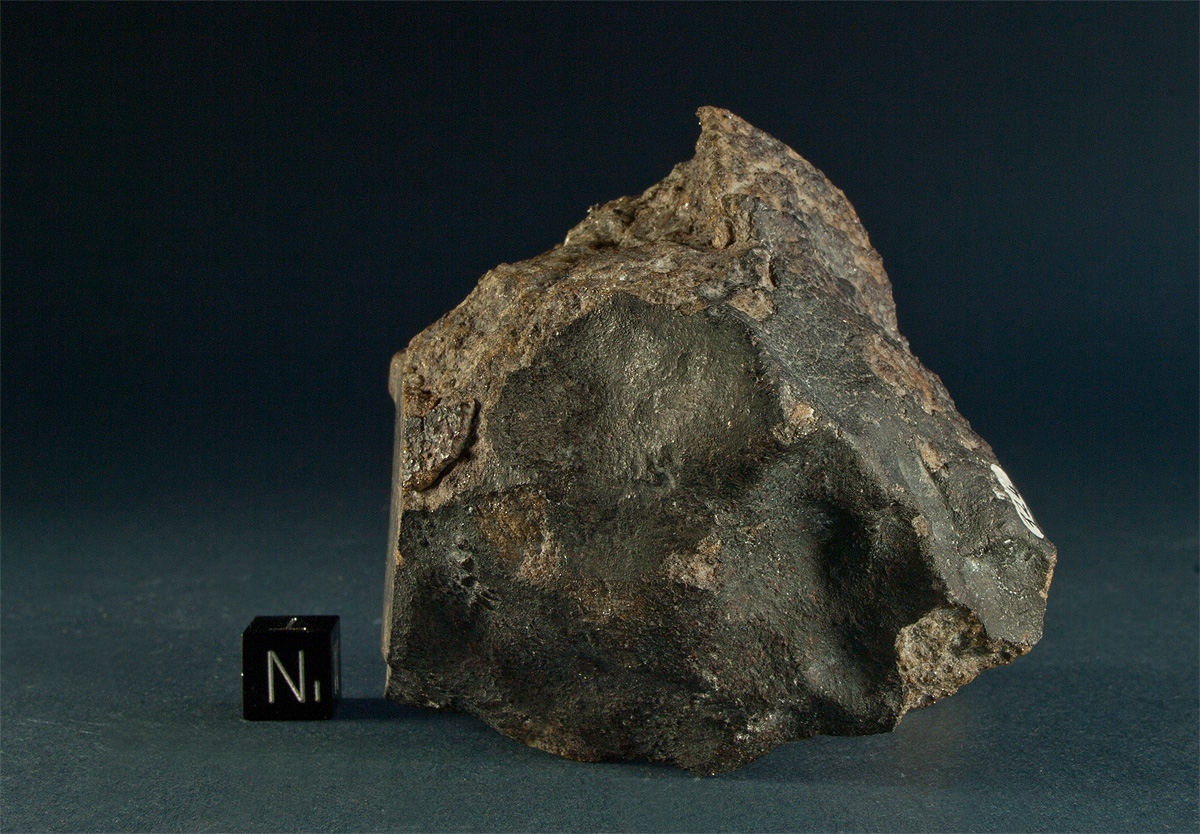
Stone, Carbonaceous chondrite (equilibrated CR-like meteorite) or primitive achondrite
Ténéré Tafassasset, Republic of Niger
Find: February 14, 2000
TKW: 114 kg
Endcut: 276.60 g
Crusted endcut of the Tafassasset meteorite. Tafassasset consists of 26 stones found in the Tenere desert of Niger between 2000 and 2001. The meteorite has yet to be definitively classified as there obviously are considerable textural and compositional differences between individual stones. In the course Tafassasset was classified a) as a metamorphosed CR chondrite in line with other Renazzo-like CR chondrites, and b) as a primitive achondrite close to the anomalous LEW 88763 and other Brachinites. A recent paper by K. G. Gardner-Vandy et al. (2008) agrees that all Tafassasset material circulating in the scientific community is paired but that some stones have distinct oxygen isotopic compositions. The authors suggest that the Tafassasset parent body of FeO-rich material partially differentiated and cooled in a region of the nebula with oxygen-isotopic composition similar to the CR chondrites. However further research is necessary in order to understand the genesis of this most intriguing meteorite.
Stone, chondrite, L5, W0
Campos Sales, Ceara, Brazil
Fall: January 31, 1991, 10:00 pm local time
TKW: 23.68 kg
Individual: 111.60 g
According to eye witness reports the fall of the Campos Sales meteorite shower was accompanied by a loud buzzing noise and a bright flash. Many observers throughout the area were intrigued by the fireball, the sonic boom and the whizzing noise of the falling stones that reportedly sounded like bullets. Several fragments were collected from a small strewn field 1 x 3 km immediately after the event by locals. The collection specimen pictured is a fully crusted individual with some degree of orientation and well defined flow lines on all but one surface.The front surface shows radial flow lines and lipping appears on the flanks. The trailing surface is coated with a thin secondary crust. Caliche is visible on the front surface and the otherwise fresh crust shows few rust stains.
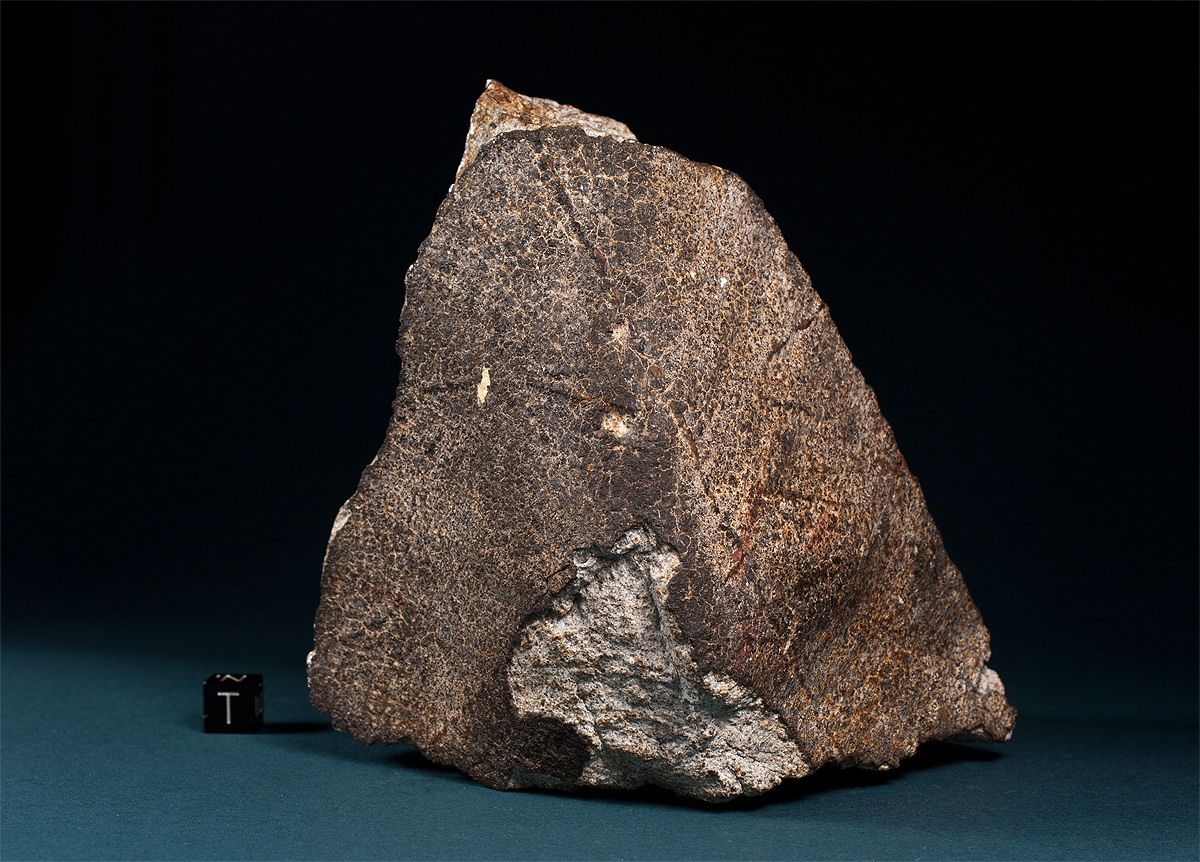
Stone, chondrite, L4, W0
Saratovskaya Oblast, Russia
Fall: September 6, 1918
TKW: ~1 MT
Fragment: 2,554 g
October 6, 1918, about 5:00 in the afternoon: Startled by a bright flash, peasants all over the northern counties of Saratov Oblast looked up to what appeared to be a group of fireballs coming from the Samara Oblast and moving to the west in a shallow arc, impressively highlighted by the sinking sun. The sighting was followed by what was described as “a powerful roar”, perceived by some as the adv…ent of the Last Judgement. Two large fragments of the meteorite, reportedly weighing 500 kg each, were later recovered from a depth of 2 meters, one near the village of Dongus in Volsky District, and the second close to a settlement near Petrovsky. According to the reports, a third mass that was seen to fall in the Khvalynsk area on the border of Samara Oblast remains missing to the present day. This specimen is a 2.5 kg Fragment from one of the 500 kg pieces dug out from the Impact pits. Specimen is uncleaned, red Russian soil is still adhering to the fresh fusion crust.
Stone, chondrite, L5, S1, W1
Morocco or Western Sahara
Find: 2006
TKW: 88 kg
Individual: 33.25 kg
Anvil shaped chondrite with five crusted and one broken surface. Two surfaces show deep and distinct regmaglypts up to 4 cm wide. The fusion crust is thick and well preserved with a webbing of contraction cracks. Flow lines are visible on several portions, particularly in and around the deepest regmaglypts. Not much is known about the find situation other that the strewn field is supposed to be located near the border of Morocco and the Western Sahara. At least three masses (33.25, 10.10 and 4.3 kg respectively) have appeared from this fall since 2006, but it is highly probable that many more have been sold without reference to each other.
Stone, chondrite, L3, S4, W2
Rio Grande do Sul, Brazil
Find: 2003
TKW: 50.4 kg
Endcut: 704.00 g
Cuboid cut section with five cut surfaces and one surface showing weathered fusion rind. Polished cut surfaces show a dense array of well defined chondrules in various sizes and crystallization patterns up to 10 mm in diameter. Large portions of the unequilibrated meteorite are shock blackened. This particular specimen was cut from the 34 kg main mass of the Santa Vitorio do Palmar meteorite, which was previously considered lost and which was rediscovered after the owner passed away in 2009. The pictured thin section slide measures 48 x 28 mm.




